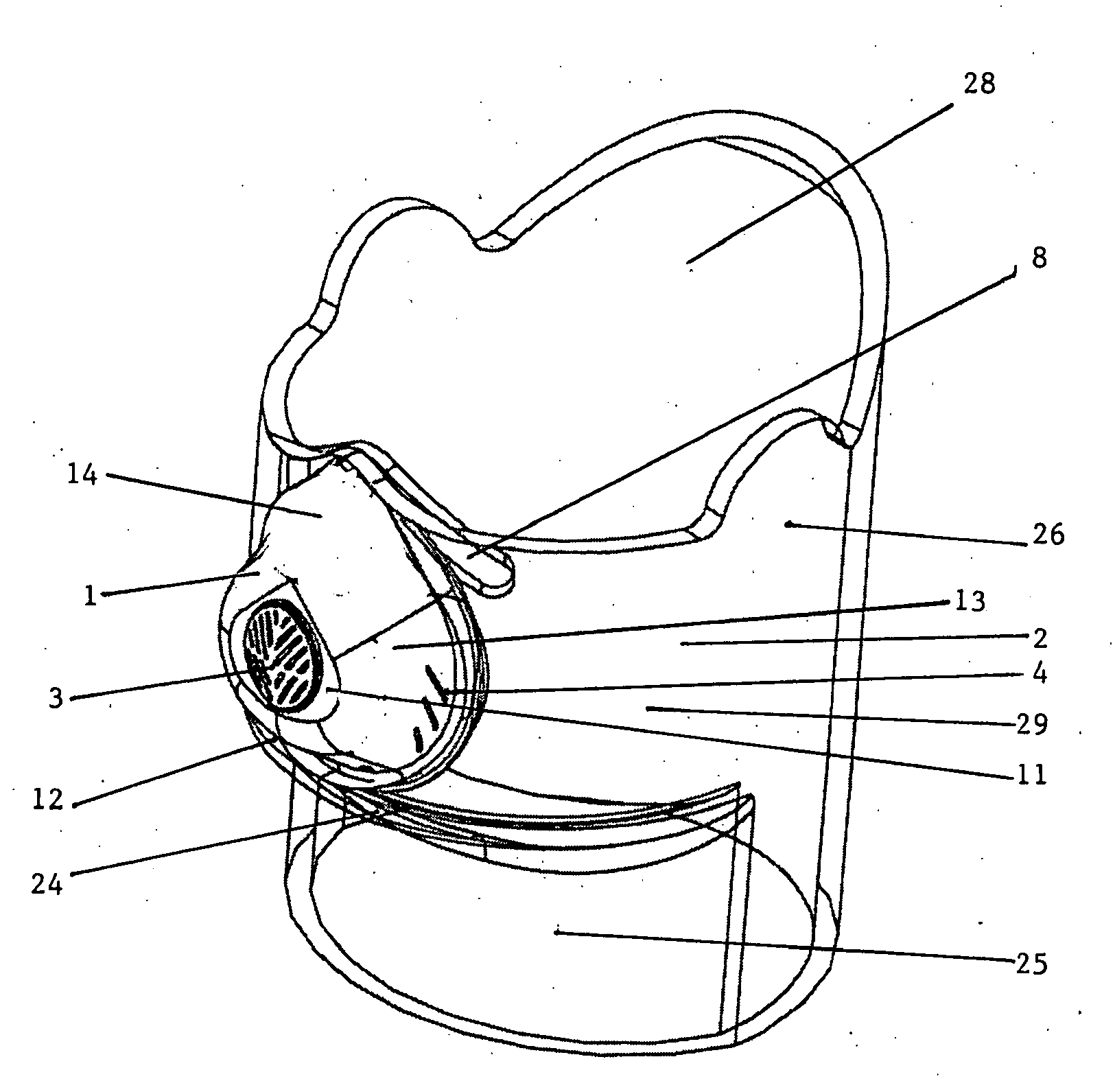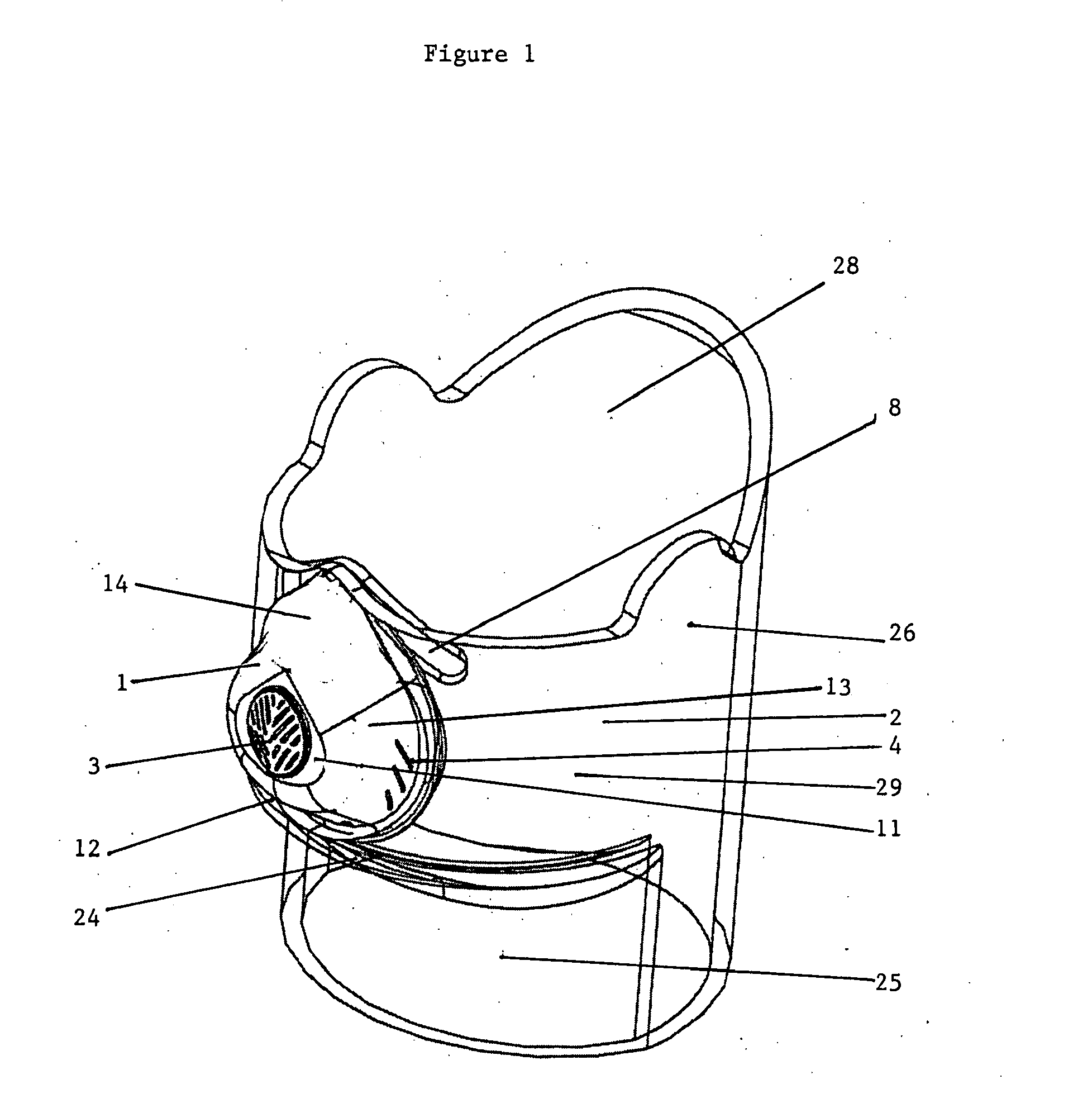Cold Weather Exposure Mask
a technology for exposure masks and cold weather, applied in the field of cold weather clothing, can solve problems such as apparatuses, asthma and lung injuries, and compromise of proper breathing
- Summary
- Abstract
- Description
- Claims
- Application Information
AI Technical Summary
Benefits of technology
Problems solved by technology
Method used
Image
Examples
Embodiment Construction
[0031]The present invention is a mask incorporating a fabric panel body and a breathing chamber to form a new and improved, non-obvious cold weather mask which will allow the wearer to stay outside and in the elements longer in order to perform work or engage in recreation. As will be appreciated from FIG. 1, the preferred embodiment of the mask comprises a bowl-shaped, concave chamber 1 and a set of fabric panels 2. The chamber extends generally forward to define a breathing space which is fluidly connected to an ambient environment when worn. The chamber of the mask is arranged and constructed to comfortably fit around the mouth and nose of the wearer. The concave chamber has a front wall 11, at least one lower wall 12, at least two side walls 13, and at least one top wall 14, each with an interior surface and an exterior surface. FIG. 4 demonstrates the preferred embodiment which is shown and described as having one front wall, one top wall, one lower wall, and two side walls. Th...
PUM
 Login to View More
Login to View More Abstract
Description
Claims
Application Information
 Login to View More
Login to View More - R&D
- Intellectual Property
- Life Sciences
- Materials
- Tech Scout
- Unparalleled Data Quality
- Higher Quality Content
- 60% Fewer Hallucinations
Browse by: Latest US Patents, China's latest patents, Technical Efficacy Thesaurus, Application Domain, Technology Topic, Popular Technical Reports.
© 2025 PatSnap. All rights reserved.Legal|Privacy policy|Modern Slavery Act Transparency Statement|Sitemap|About US| Contact US: help@patsnap.com



